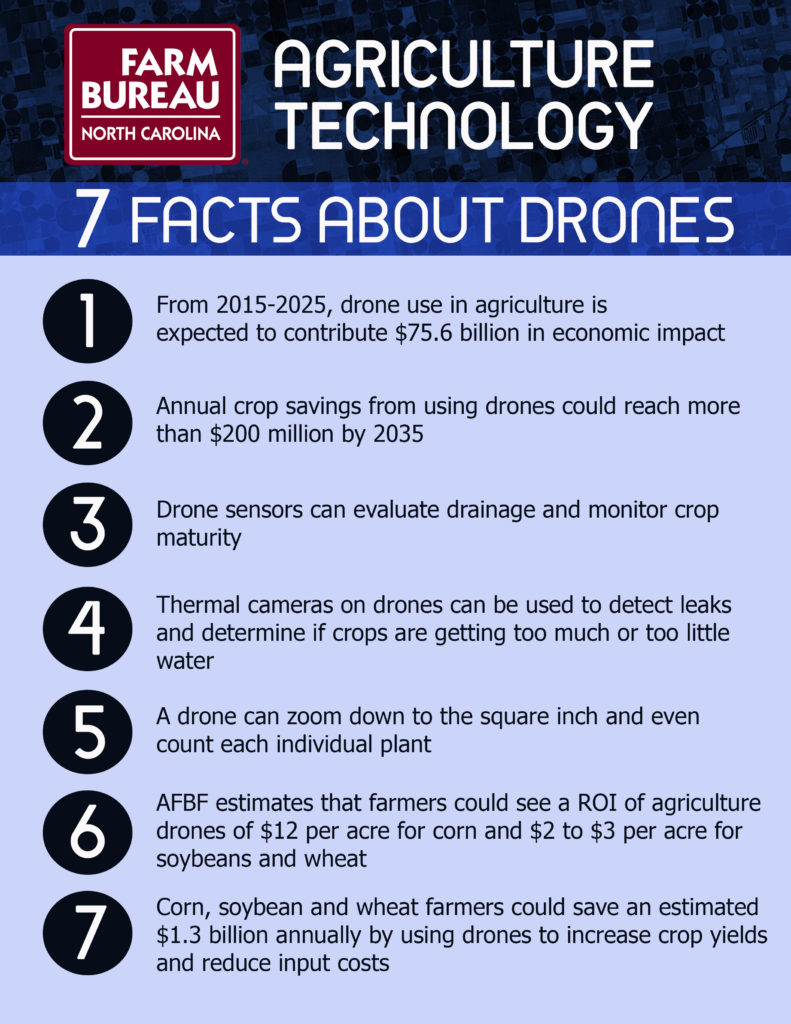A couple weeks ago we talked about the growing use of drones in agriculture and outlined some of the policies surrounding drone usage. This week, we’d like to turn the spotlight back onto drones and provide some cool facts about how this technology is being used to help farmers improve yields, use inputs more efficiently, and increase profitability.
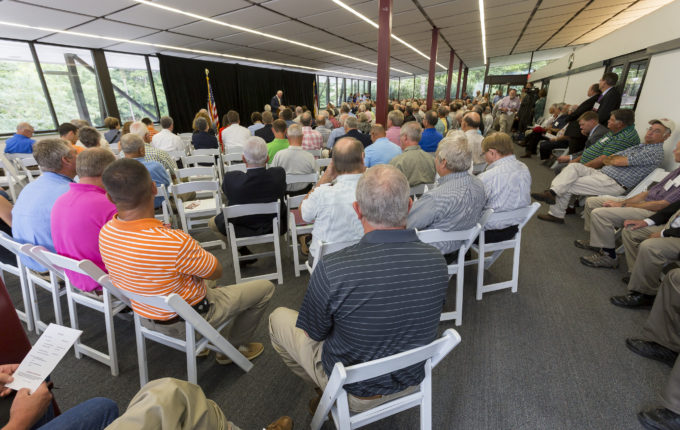 Agriculture
Agriculture
Last week, North Carolina Farm Bureau held its annual Policy Review Day. No, we’re not talking about insurance policies, but rather policies that address emerging issues and areas of concern to North Carolina farmers. Things like labor, transportation, property rights, taxes, regulatory reform, and more. It’s a day for NCFB’s farmer members to come together to talk about what’s going on at their farm, and to start figuring out how to solve tomorrow’s problems.
Just a quick bit of background: North Carolina Farm Bureau is the state’s largest general agriculture organization. We have more than 500,000 member families, of which more than 40,000 are farm families. We have members in all 100 counties representing all of agriculture – row crops, animal agriculture, tree farmers, fishermen, beekeepers, small farms and big farms, conventional and organic. We’re not a government agency, we’re a non-profit. Our mission is to advocate for farm and rural families.
 We’re a true grassroots organization. We have thousands of farmers from all over the state who actively participate in the policy development process to tell us what they need. Those farmers and the policies they enact guide the organization. NCFB’s policies and programs seek to preserve, support and improve agriculture in our state. These policies protect farmers and rural families and help ensure that our nation’s supply of food, fiber, and other commodities is safe and abundant, now and in the future.
We’re a true grassroots organization. We have thousands of farmers from all over the state who actively participate in the policy development process to tell us what they need. Those farmers and the policies they enact guide the organization. NCFB’s policies and programs seek to preserve, support and improve agriculture in our state. These policies protect farmers and rural families and help ensure that our nation’s supply of food, fiber, and other commodities is safe and abundant, now and in the future.
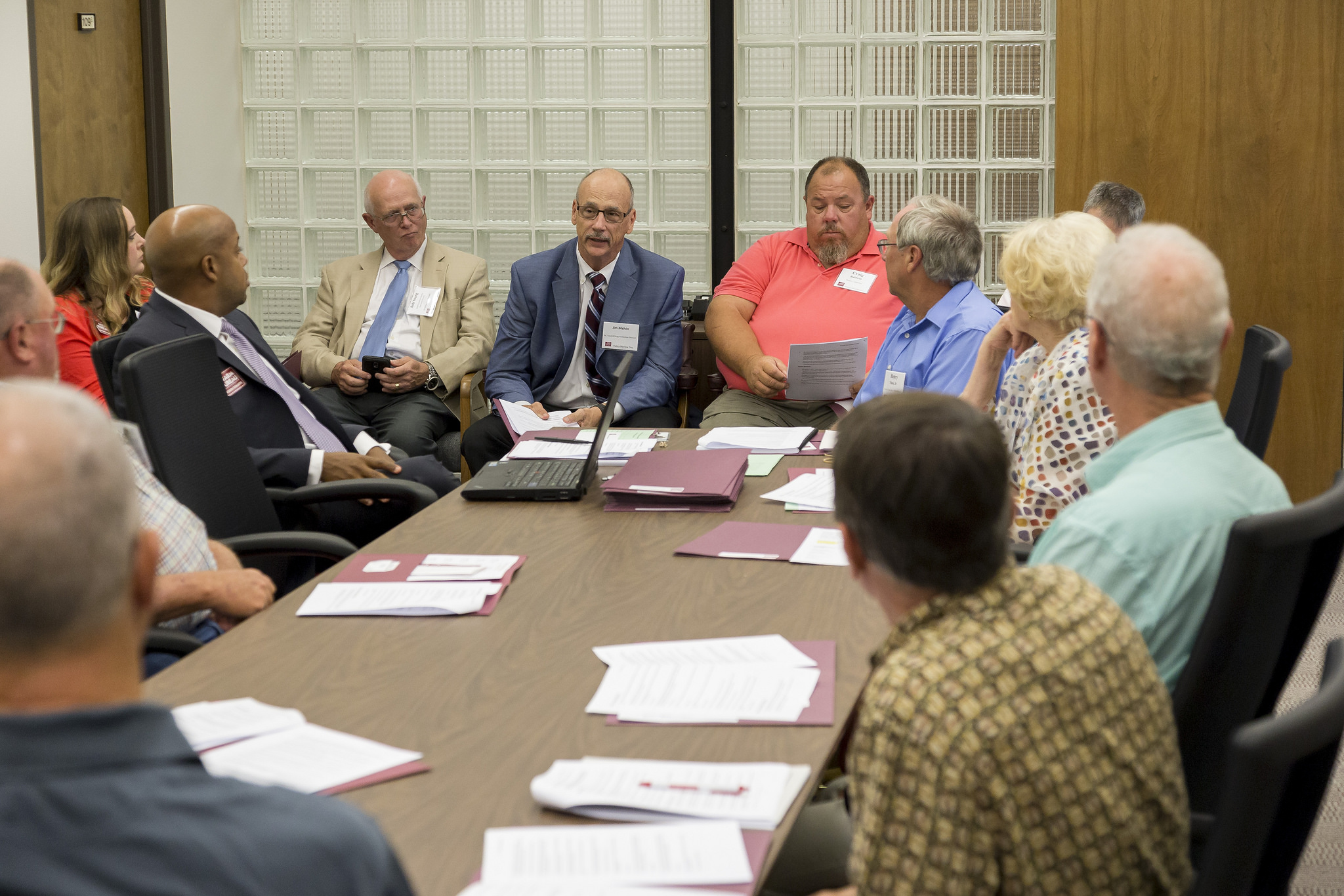 Every year, this process of developing ideas into policy kicks off with Policy Review Day, continues through the fall, and concludes at NCFB’s Annual Convention. During the fall, thousands of farmers weigh in on policy resolutions at meetings in all 100 counties. Before any of these resolutions can become official policy, they must be vetted by a 100-person committee and approved by 600 voting delegates. Both the committee and the delegate body are comprised of North Carolina farmers representing all 100 counties in the state.
Every year, this process of developing ideas into policy kicks off with Policy Review Day, continues through the fall, and concludes at NCFB’s Annual Convention. During the fall, thousands of farmers weigh in on policy resolutions at meetings in all 100 counties. Before any of these resolutions can become official policy, they must be vetted by a 100-person committee and approved by 600 voting delegates. Both the committee and the delegate body are comprised of North Carolina farmers representing all 100 counties in the state.
 This process is grassroots in action. It provides the foundation for every decision, program, and activity we undertake as an organization. And frankly, it’s something we’re proud of. And it’s why elected officials and decision makers turn to Farm Bureau as “The Voice of Agriculture™”.
This process is grassroots in action. It provides the foundation for every decision, program, and activity we undertake as an organization. And frankly, it’s something we’re proud of. And it’s why elected officials and decision makers turn to Farm Bureau as “The Voice of Agriculture™”.
This week’s post is written by Catherine Harward, a rising senior at North Carolina State University. As a Warren Leadership Fellow, Catherine spent this summer interning with North Carolina Farm Bureau learning about public policy and agricultural advocacy.
Three years ago, I never could have imagined where I would be today. If someone would have told me that I would be interning in agricultural policy for the largest agricultural organization in North Carolina, I would have shook my head in disbelief.

To give you some background, I grew up on a beef cow/calf operation in Stanly County raising purebred and commercial cattle with my father, mother, and four sisters. Even though my dad has all daughters, he never allowed any of us to think because we are girls we could not work on the farm. Since I was little, I enjoyed riding with my dad to feed cows, check fences, and vaccinate the herd, among other work. As I grew older, I became increasingly active in my family’s cattle operation in addition to our livestock marketing businesses. We market cattle across North Carolina and in adjoining states, keeping all members of our large family busy and involved in the family businesses. In my spare time, between school, sports, and the farm, I showed cattle at fairs and exhibitions, sparking my interest in youth agricultural organizations. I loved growing up in a farm family, and I appreciate the life lessons the farm taught me that have motivated me to work hard and to be successful.
I realized that even if you are not interested in politics, it still affects you, and it is crucial that we have farmers at the table helping to make decisions.
Over the past three years as a college student, I acknowledged my increasing passion for agricultural advocacy. Farm Bureau’s Young Farmers and Ranchers program at NC State opened my eyes to the diverse avenues for advocacy and the power of networking. I met various professors who motivated me to look into my passions and purpose in agriculture. Each time, my passions circled back to cattle and advocacy. I never had a great interest in politics and tended to shy away from those discussions. However, reality hit me over time and I began to recognize how important it is to have people working in agricultural policy to keep farmers farming. I realized that even if you are not interested in politics, it still affects you, and it is crucial that we have farmers at the table helping to make decisions.
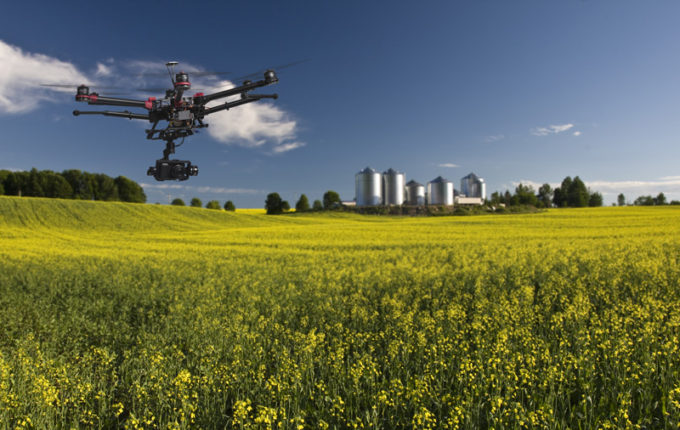 Technology
Technology
What is a drone? Where can I fly one? Do I need a license? Can I shoot one down if it flies over my house? These are all frequent questions people ask about Unmanned Aircraft Systems (UAS), commonly known as drones. (If you don’t read any further, no, you should not shoot them down.)
Basically, a drone is a remote controlled aircraft, usually equipped with a camera and/or other sensors. The technology has become increasingly popular over the past few years and more people are beginning to utilize drones for things like data collection, photography, videography, and monitoring personal property.
But this is an agriculture blog, right? So why are we talking about drones?
Over the past two weeks we’ve shared a couple of posts from Dr. Rebecca Tippett of Carolina Demography at UNC’s Carolina Population Center. If you haven’t read them, we encourage you to go back and read those two posts in their entirety – it’s really good stuff. But as great as Rebecca’s work is, we can’t post ALL of it, so we’ve decided to break down what we believe to be some of the more important bits of information. Of course, you can read all of her posts at demography.cpc.unc.edu/blog and follow her on Twitter @ncdemography.
Written by Dr. Rebecca Tippett and originally published at Carolina Demography. This continues our series of posts highlighting some of Rebecca’s excellent insights into rural North Carolina. If you missed last week’s post, be sure to go back and check it out as well.
“The growth of urban places historically has been fueled largely by in-migration from rural areas (including from other countries)…” – Daniel Lichter & David Brown, “Rural America in an Urban Society”
Nearly half of North Carolina’s counties – 47 of 100 – had net out-migration between 2010 and 2015, meaning more people moved away than moved in.
There are some clear patterns to this movement. The core counties of the state’s major metropolitan areas—such as Guilford (Greensboro), Forsyth (Winston-Salem), Mecklenburg (Charlotte), and Wake (Raleigh)—saw net in-migration. In general, the counties immediately adjacent to these core counties, such as Johnston and Harnett south of Wake, also experienced net in-migration. In addition, regions that are generally attractive to retirees, such as Western North Carolina and the coastal counties, have had net in-migration since 2010.
Meanwhile, many of the counties that have experienced net out-migration are on the periphery of larger metro areas, are located in smaller metropolitan or micropolitan regions, or are rural counties, meaning they belong to neither a metropolitan nor micropolitan region. (A map of North Carolina’s metropolitan and micropolitan statistical areas is available here and the delineation files are available here.)
But even though many counties have experienced net out-migration, North Carolina is a “sticky” state. Most people born here still live here. Among North Carolina-born adults, 72% still live here, the highest share of any other state except for Texas. And, when we look at individuals who move out of their county, individuals from rural, outlying, and micropolitan counties are much more likely to stay in North Carolina.
Written by Dr. Rebecca Tippett and originally published at Carolina Demography. Over the next few weeks the First Furrow will be highlighting some of Rebecca’s excellent insights into rural North Carolina.
As we’ve mentioned in the past, North Carolina has a large population residing in areas that the U.S. Census Bureau classifies as rural. Among the 10 most populous states, North Carolina has the largest proportion of individuals living in rural areas. In fact, North Carolina’s rural population is larger than that of any other state except for Texas.
Prior to coming to Carolina Demography, I worked in a similar role producing and interpreting demographic data in Virginia. Since returning to North Carolina, I have mentioned to a number of people that North Carolina is more “demographically interesting” in certain respects than Virginia. This isn’t to say that Virginia isn’t interesting –it is!—but the fundamental patterns of demographics are markedly different in Virginia compared to North Carolina. And some of this difference is rooted in the higher proportion of individuals living in high density, urbanized areas in Virginia.
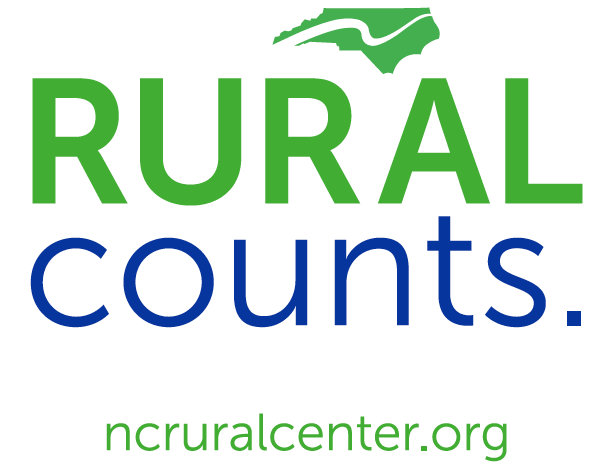 Agriculture / Economy
Agriculture / Economy
Written by Jason Gray, Senior Fellow of Research and Policy at the North Carolina Rural Center
Connection to place and land is the heart of rural North Carolina. It is what defines rural from urban. It also reflects the positive connection of what we do to where we live. Rural work and culture is not, as some would have us believe, “nonurban” – a null set waiting to become something else. The rural life has inherent worth and value.
Agriculture is a major expression of this worth and value. The North Carolina Rural Center believes that the sustainable, productive use of land, timber and marine fisheries is one of the defining characteristics of rural life, despite the inherent physical and financial challenges. North Carolina’s strategic location in the middle of the eastern seaboard places its agricultural production near a large percentage of the country’s population. The topographical variety and temperate climate makes North Carolina an agriculturally diverse state, second only to California. One of the greatest job creation opportunities available to rural North Carolina is the focused effort to increase the amount of value-added production that occurs near where the product is grown. Continued good stewardship of our state’s immense natural resources affords us the opportunity to maintain a desirable quality of life.
In April of this year the Rural Center released a ten point advocacy package. More than just a policy advocacy package to engage state and federal policy makers, it is also a statement of what we believe works. Advocacy point #8 is Develop Opportunities for Agriculture and Natural Resources, including Biotechnology and Value-Added Food Processing. We identified the following sub-strategies to do this:

